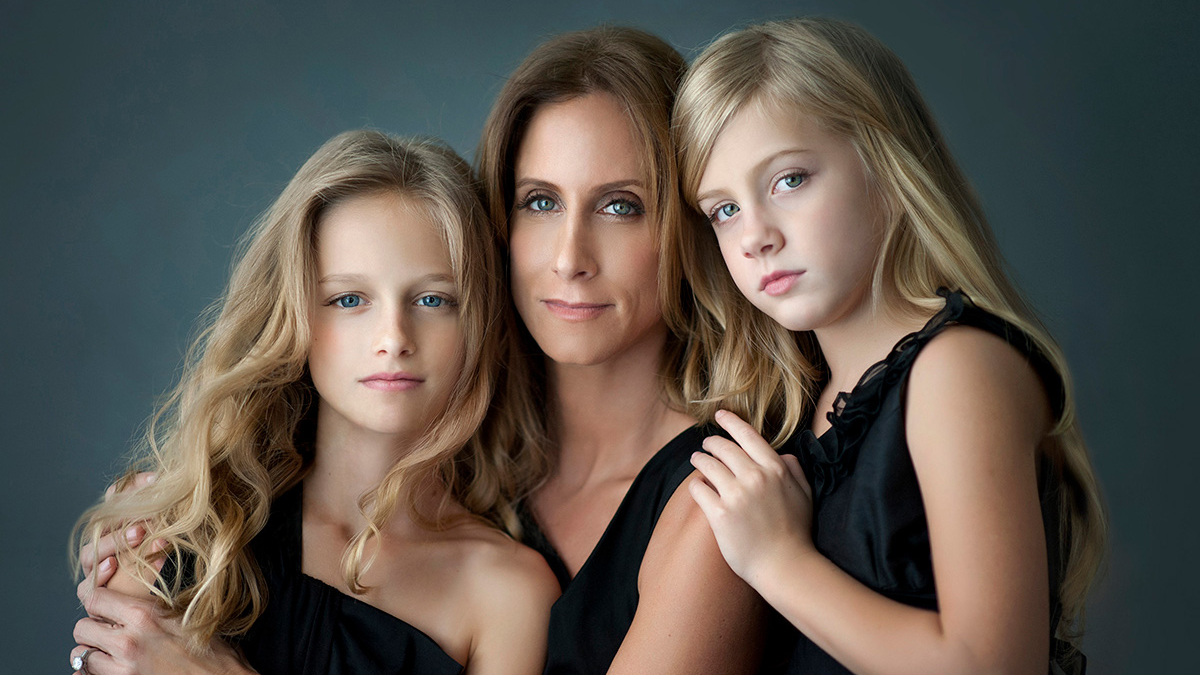Risky Business: Building success on calculated risk
Photographer Megan DiPiero offers tips on taking calculated risks for your business.
• February 2019 issue
Megan DiPiero, Cr.Photog., CPP, knows a thing or two about risk. In fact, you could say she owes much of her success to a willingness to take calculated risks.

DiPiero started her Fort Myers, Florida, business as a shoot-and-burn portrait photographer charging what she guessed consumers would pay. Very quickly, she discovered she wasn’t making enough money to justify all the time she devoted to work, and she was getting burned out fast. “I decided that if I’m going to do this, I’m going do it for real,” she says.
DiPiero needed an education in the business of photography. She needed to learn from those who’d found success and study the models run by the leaders in the field. So she took her first big risk and dropped a chunk of change—that wasn’t really in her budget—on traveling to a national convention. While there, she looked up the biggest names on the speaker list and dedicated herself to studying them. She signed up for every class related to pricing, and she committed to putting the lessons into practice.
When she returned home, she took her next big risk. After calculating her true costs and defining her target income, DiPiero raised prices 1,000 percent. This was not only a smart financial move for her business, but it also reinforced to clients that she was creating one-of-a-kind artworks for them. That’s a very different brand position than simply selling 8x10s, and it has the potential to attract a new segment of consumers who are willing to invest in unique art for their home.
To further reinforce the new luxury boutique model of her business, she implemented portrait sales consultations and in-person sales. “I told myself, Let’s give this a shot, and either it works or I’ll go do something else,” she says.
It worked. In short order, DiPiero’s business was on an upswing, so much so that she started to prepare for her next big risk: going full time with a new brand. Up to that point, DiPiero had been a part-time photographer while her husband was the family’s primary breadwinner. In 2013, DiPiero and her husband decided to go all-in on the photography business, launching a beauty portrait and headshot brand with DiPiero as the chief photographer and her husband quitting his job to help with the business. They carved out a portion of their house for use as a studio.

“That was a big and scary risk,” says DiPiero. “But I discovered that there’s something really powerful in saying, I’m all in, making that leap, and dedicating yourself to something.”
Since then, DiPiero’s business has grown by leaps and bounds. She’s established her brand in a community where no similar services were available at the same level. She’s become a recognized industry leader and is now appearing at photography events as the kind of role model she sought out at the beginning of her own journey.
Along the way, she’s compiled a series of recommendations to help other photographers embrace risk and grow their businesses. The first step is understanding what constitutes a potentially productive, calculated risk versus something that is more haphazard and less likely to succeed.
HALLMARKS OF CALCULATED RISK
There’s proof of concept. Before taking a risk, you need to have proof of concept. Show that you can do it. You don’t always have to create it from scratch—you could be following in someone else’s footsteps—but it’s important to prove that it can work.
The plan works on paper. Show that your theory is sound. Show you’ve done the research, done the accounting, and made the numbers work. Have you figured out how many clients you’ll need, how many sessions, and for how much? If your plan doesn’t work on paper, it won’t work in real life. So map it out. See if it’s even possible and, if so, what’s necessary to make it happen.
The risk positions you to achieve a worthy goal. You know it’s a good risk if it positions you to achieve something valuable. The reward needs to be worth the risk. This reward is the why in your strategy.
You find yourself outside your comfort zone. Achieving success doesn’t happen by doing only those things you find comfortable. As an entrepreneur, it’s your job to be innovative and visionary. Otherwise, you’re just an employee in your own business.

APPLY RISK SUCCESSFULLY
Take it step by step. No one says you have to dive in, all or nothing, at the beginning of the process. You can build up to those bigger risks step by step, embracing smaller risks, little things that push you out of your comfort zone, until you’re ready to make that big, flying leap.
Make a commitment. The promise of commitment forces you to perform. There are several ways to commit:
- Financial commitment. Once you pay for something, it’s harder to back out and let those resources go to waste. Examples: buying tickets to a convention, paying for childcare, renting a new studio space.
- Verbal commitment. Say it out loud to someone who’s going to hold you accountable. You could declare candidacy for PPA certification, state your goals to a mentor, even tell your clients about a big change you plan to make.
- Time commitment. Schedule yourself and set deadlines. Dedicate the time needed to reach your goals.
Line up the resources. You need some resources to take a calculated risk on your business. Diving in with no plan and no financial support is more foolhardy than brave. Consider how you will support yourself during the key transitions. Do you have a nest egg, financial support from a spouse or family member, funds from a small business loan or credit line, money to invest in education
Look at the bigger picture. Go beyond the concerns of your local market. Align yourself with the great thinkers in your field, look at national trends, and figure out how you can position your business for bigger and better things.

Spread the word. If you believe in something, you have to let people know it. Promote your big moves and get people behind the movement.
Don’t be afraid to make mistakes. To quote cartoonist Stephen McCranie, “The master has failed more times than the beginner has even tried.” So get out there and try it, take that risk. It’s not going to kill you. Most of our fears are just false assumptions.
Think big. As the saying goes, If your dreams don’t scare you, they’re not big enough. Build up to that big thing that’s always scared you. After you do the big thing, there will come a new bigger thing to tackle. It gets easier to challenge yourself and take bigger risks. Just focus on the thing in front of you.
Shift your thinking. Think of yourself as a business owner, an entrepreneur, not a photographer. So many photographers are focused on being good technicians. Go beyond that. Think bigger and think about innovation.
Understand your why. What is the why behind your business? What inspires you? Who are you working for? What are those overarching goals that guide everything you do? Understanding the why will help you formulate your calculated risks more effectively.
Just do it. At some point you have to say, “I’m taking that risk.” It’s time to make a move and put the plan in motion.
Jeff Kent is editor-at-large of Professional Photographer.

